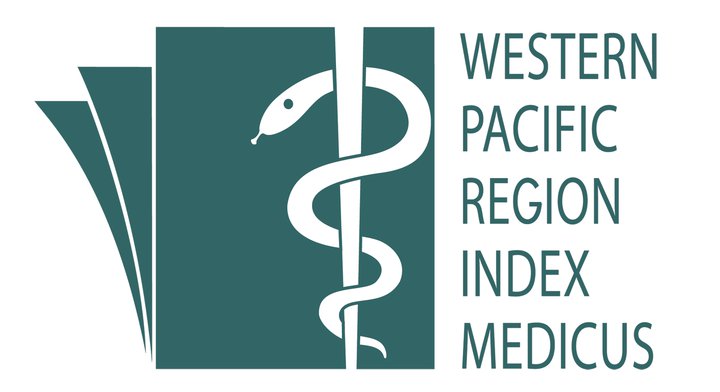The Effect of Rear Seatbelt Advocacy and Law Enforcement in Reducing Injuries among Passenger Vehicle Occupants in Malaysia
Keywords:
Rear Seatbelt Interventions - Poisson model - Health Outcomes.Abstract
Introduction
The increase in car usage due to economic prosperity has led to increase in occupant injuries. One way to reduce the injuries encountered by road accident victims is by implementing the rear seatbelt (RSB) law. Rear seatbelt wearing has been proven to save lives. In Malaysia, the implementation of the restraint system for front occupant has started in the 70’s. However, the rear seatbelt enforcement law only came in 2009, after six months of an advocacy program. Prior to the introduction of the rear seatbelt law, rear seatbelt wearing rate was rather low, started to increase gradually during the advocacy period and jumped to the highest level after two month of the enforcement. This paper attempts to assess the effectiveness of the rear seatbelt intervention in reducing injuries among passenger car occupants in Malaysia using the generalized linear model (GLM).
Methods
In GLM procedure, the dependent variable is the number of people from passenger vehicles that sustained severe and slight injuries, for the study period. The study period selected covers six months before implementation, six months during advocacy program, and six months after the law is implemented. The independent variables considered are enforcement and balik kampung activities (both are dummy variables) and time effect.
Results
Our results suggest that RSB intervention (p-value= 0.0001) had significantly reduced the number of people sustained serious and slight injuries by about 20%.
Conclusions
The implementation of change in the RSB law has benefited not only in reducing the number of injuries but also result to great impact to the health outcomes.
Â
References
Royal Malaysian Police. Annual Road Accidents Statistics. Kuala Lumpur: Traffic Branch Bukit Aman. 2009.
Ichikawa M, Nakahara S, Wakai S. Mortality of front-seat occupants attributable to unbelted rear-seat passengers in car crashes. Lancet. 2002; 359: 43-44.
Broughton J. The actual threat posed by unrestrained rear seat car passenger. Accident Analysis and Prevention. 2004; 36: 627 - 629.
Lapparent M. Willingness to use safety belt and levels of injury in car accidents. Accident Analysis and Prevention. 2008; May 40(3): 1023-1032.
Routley V, Smith JO, Li D, Yu M, Wang J, Zhang J, et al. China belting up or down? Seat belt wearing trends in Nanjing and Zhousan. Accident Analysis and Prevention. 2008; 1850-1858.
Carpenter CS, & Stehr M. The Effects of Mandatory Seatbelt Law on Seatbelt Use, Motor Vehicles Fatalities and Crash-Related Injuries among Youths. Journal of Health Economics. 2008; 27: 642-662.
Shimamura M, Yamazaki M, & Fujita G. Method to evaluate the effect of Safety Belt Use by Rear Seat Passengers on the Injury Severity of Front Seat Occupants. Accident Analysis and Prevention. 2005; 5-17.
Radin Umar, R. Integrated Approach of Road Safety in Malaysia. The 7th Malaysian Road Conference. Sunway, Malaysia. 2007.
Rivara F, Thompson D, & Cumings P. Effectiveness of primary and secondary enforcement seat belt laws. American Journal of Preventive Medicine. 1999: 16 (1) 30-39.
Shults R, Elder R, Sleet D, Thopmson R, & Nicholas J. (2004). Primary Enforcement seat belt law are effective even in the phase of rising belt use rates. Accident Analysis and Prevention. 2004; 36: 491-493.
Dinh- Zarr, T, Sleet D, Shults R, Zaza S, Elder R, Nicholas J, et al. (2001). Reviews of evidence regarding interventions to increase the use of safety belts. American Journal of Preventive Medicine. 2001: 21 (S): 48-65.
Houston D, & Richardson Jr, L. (2006). Reducing traffic fatalities in the American States by upgrading seat belt use laws to primary enforcement. Journal of Policy Analysis and Management. 2006; 25(3): 645-659.
Abdul Rahmat A, Nurulhuda J, Zarir Hafiz Z, Mohd Huzaifah M, & Radin Umar R. An Assessment of Rear Seatbelt Availability and Accessibility in Malaysia - a Preliminary Study. Kuala Lumpur: Malaysian Institute of Road Safety Research. 2007.
Norlen M, Muhammad Fadhli MY, Noradrenalina I, Ilhamah O, Noor Faradila P, & Farah Anida M. Phase 1: Achievement of First 3-Month Advocacy Program Rear Seatbelt Use: Public Awareness and Practice. Kuala Lumpur: Malaysian Institute of Road Safety Research. 2008.
Hashim H, & Syed Mohamed Rahim S. The Construction of Road Accident Analysis and Database System in Malaysia. 4th IRTAD Conference. Seoul: IRTAD; 2009. P. 236-237.
Radin Umar R, Murray M, & Brian H. (1996). Modelling of conspicuity-related motorcycle accidents in Seremban and Shah Alam, Malaysia. Accident Analysis and Prevention. 1996; 28(3): 325-332.
Broughton J. The effect of the 1983 changes to the law relating to drink/driving. Crowthorne, UK: Transport and Research Laboratory. 1985.
Shankar V, Mannering F, & Barfield W. (1995). Effect of roadway geometrics and environmental factors on rural freeway accident frequencies. Accident Analysis and Prevention. 1995; 27(3): 371-389.
Cameron A, & Trivedi P. Regression analysis of count data. Cambridge University Press. 1998.
Miaou S. (1994). The relationship between truck accidnets and geometric design of road sections: Poisson versus Negative Binomial regression. Accident analysis and Prevention. 1994; 26(4): 471-482.
Wedderburn R. (1974). Quasi likelihood function, generalized linear models and the Gaussian method. Biometrika. 1974; 61: 439 - 447.
McCullagh P, & Nelder J. Generalized Liner Models. Chapman & Hall. 1989.
Maher M, & Summersgill I. (1996). A comprehensive methodology for the fitting of predictive accident models. Accident Analysis and Prevention. 1996; 28: 281-296.
Downloads
Additional Files
Published
How to Cite
Issue
Section
License
IJPHR applies the Creative Commons Attribution (CC BY) license to articles and other works we publish. If you submit your paper for publication by IJPHR, you agree to have the CC BY license applied to your work. Under this Open Access license, you as the author agree that anyone can reuse your article in whole or part for any purpose, for free, even for commercial purposes. Anyone may copy, distribute, or reuse the content as long as the author and original source are properly cited. This facilitates freedom in re-use and also ensures that IJPHR content can be mined without barriers for the needs of research.






